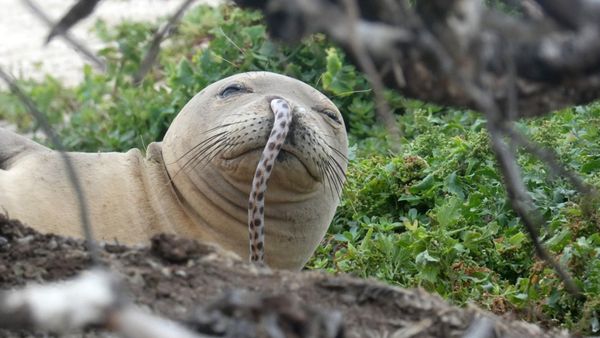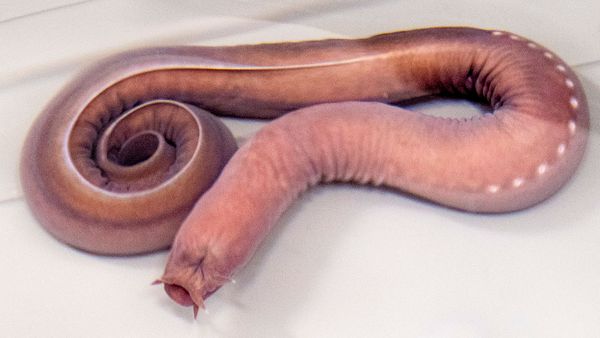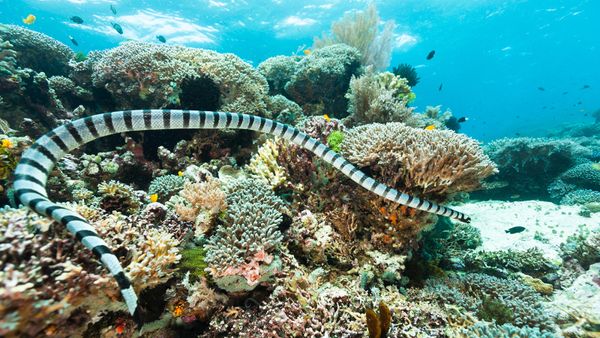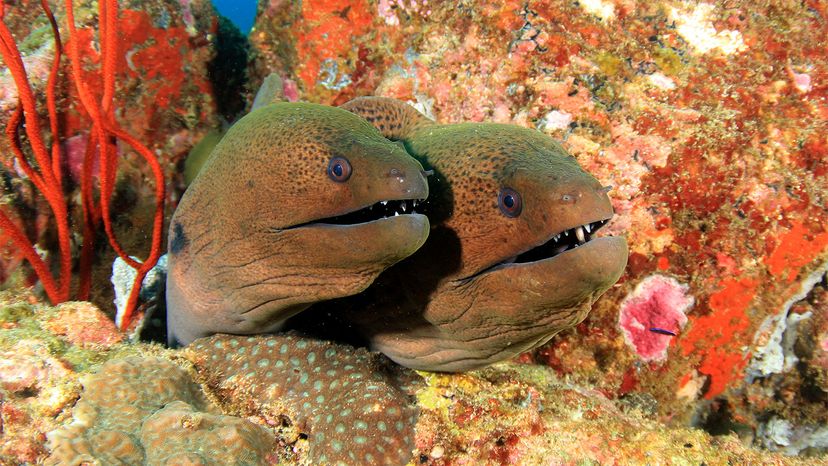
Online, it's become a frequently asked question. How do eels — those long, writhing fish you might have seen at an aquarium or seafood restaurant — go about making baby eels? In other words, how do eels reproduce?
People have studied the creatures for literally thousands of years, but even after all this time, some aspects of their breeding lives are still shrouded in mystery.
To get the skinny on eel reproduction, we spoke to an expert: Caroline Durif, an ecologist at the Institute of Marine Research in Storebø, Norway who studies the habits of these incredible fish. Here's what we learned.
Advertisement
What Exactly Is an Eel?
Calling something an "eel" doesn't make it one, per se. No doubt you've heard of the South American electric eel (Electrophorus electricus). Despite its common name, that dramatic fish isn't really an eel. Instead, it's a bizarro carp relative that's classified as a "knife fish."
The order Anguilliformes contains all of the world's "true" eels. More than 800 species exist, including morays (you know, Ursula's sidekicks from "The Little Mermaid"), conger eels and the well-named spaghetti eels.
Usually slender and elongated, true eels don't have pelvic fins, which are twin appendages often found on the underbellies of other fish. Anguilliformes can be scaleless; many species feel slippery to the touch.
Regardless of their texture, saltwater is the preferred habitat for the majority of eels. However, there are 19 species of so-called "freshwater eels," also known as the "Anguillids," that spend much of their lives far away from salty environments. "They spawn in the sea and grow in freshwater," explains Durif in a video interview.
Of those 19 species, the three best-known are perhaps the European eel (Anguilla anguilla), the American eel (Anguilla rostrata) and the Japanese eel (Anguilla japonica).
Advertisement
Early Life Stages of an Eel
Saying these fish have a complex life cycle is an understatement. If it survives to reach sexual maturity, a freshwater eel will have gone through five distinct stages. With each new phase, the animal experiences both a physical transformation and a shift in its lifestyle.
"The first [stage] is called the leptocephalus larva. They're called leptocephalus because 'lepto' means leaf and 'cephalus' means head," Durif says.
True to the name, the newborn larvae have leaf-shaped bodies that appear broad and flattened in profile. (In technical jargon, their bods are "laterally compressed.") Being nearly transparent, they're also very well-camouflaged — imagine trying to recover a lost contact lens from the bottom of a swimming pool.
Leptocephalus larvae are oceangoing animals. Eventually, though, instinct pushes them to find a change in scenery, which is where the change into the second phase of the life cycle occurs.
"For the anguillids, they migrate for great distances, they drift through the Gulf Stream. Then when they reach the continental shelf, they metamorphose into glass eels," Durif tells us. Glass eels are still (more or less) transparent, but they're longer and skinnier by comparison.

Advertisement
Eel Maturity
Being "attracted to freshwater" in Durif's words, the next step for most anguillid glass eels is to head inland by traveling up rivers.
That brings us to life stage No. 3: "yellow eels." Unlike the transparent larvae and glass eels, these guys have body pigment, with a yellowish overall complexion. It's not the last color change the fish will go through.
"When they're ready, they become silver eels, which is like puberty," says Durif. "We call them 'silver' because they have a silver belly and a black dorsal area ... It's an adaptation to predation."
The change doesn't happen overnight. Transitioning from a yellow eel to a silver eel can take 20 or 30 years. Once the process finally ends, they return to their roots and head seaward. Only then can the eels attain sexual maturity, the fifth and final stage in their life cycle.
Advertisement
An Eel's Final Days
To quote a 2021 paper (co-authored by Durif) that was published in the journal Fish and Fisheries, we don't know much about the reproductive stage of anguillid eels "because sexually mature eels have never been caught alive in the wild."
Likewise, no one has observed these eels spawning in their natural habitat. Scientists have yet to catch wild anguillids "in the act," if you will.
Whatever happens out there, experts think freshwater eels die shortly after mating. Laboratory researchers have managed to induce sexual maturity in silver eels by injecting them with hormones.
After the transition, their health declines. "The bones become decalcified like a woman during menopause. It's super interesting, actually. And then their digestive tract, their gut, regresses," Durif explains.
Maybe that's just as well. Breeding-age freshwater eels get together in places where their usual food options (insects and small fish) are probably rare or nonexistent.
Advertisement
Tales of the Sargasso Sea
Out in the Atlantic Ocean, there's a region called the Sargasso Sea. Unlike the Mediterranean, the Red and most other seas, this one isn't bordered by any land masses. Instead, its peculiar borders are formed by strong ocean currents.
Both American and European eels come here to reproduce. Research suggests they might use magnetic fields as a navigation tool.
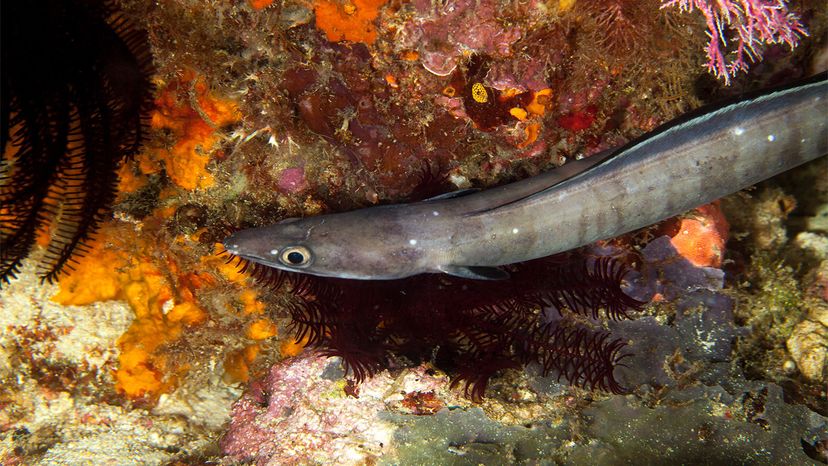
Half a world away, freshwater eels who live in and around the Pacific Ocean have spawning areas of their own. The Japanese eel is thought to breed at a site west of the Mariana Islands. Other species could be procreating somewhere between New Caledonia and Fiji.
"The European eel has the longest migration," Durif tells us, with some individuals crossing roughly 4,971 miles (8,000 kilometers) to reach the Sargasso Sea from Norway.
Eels release their eggs underwater, to be fertilized by clouds of expelled sperm. That goes for both freshwater eels and the nonfreshwater species, such as morays and conger eels.
Speaking of which, Durif says we "know even less about conger eels than anguillid eels" when it comes to reproduction. "We think there is at least a spawning area, in the Mediterranean maybe." Hopefully, future research will shed some light on their private lives.
Advertisement
